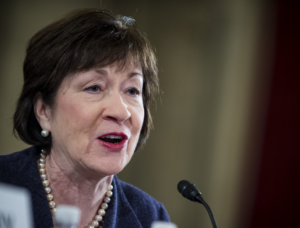by Gabriel Levitt, President, PharmacyChecker.com and Prescription Justice | Apr 26, 2018 | Drug Prices

Senator Claire McCaskill (D-MO) requested an investigation into drug price increases among the Medicare Part D program’s 20 most widely-prescribed medications over a five-year period. The investigation, conducted by the Senate Committee on Homeland Security and Government Affairs, found that average annual drug price increases were 12%, about 10 times higher than the rate of inflation. One drug, Nitrostat, increased by 477% during the five-year period. PharmacyChecker decided to find out what the savings would be from international online pharmacies for cash payers on these medications. The average potential prescription savings is 80%, further evidence that seniors can benefit from lower drug prices outside the U.S. when their pharmacy benefits are inadequate.
Adding a little spice to this research, we found that 70% of these 20 medications, the ones sold in U.S. pharmacies, are foreign-made, imported drugs. This shows that importation is legal for drug companies that make medications overseas. The countries where they are made get the manufacturing jobs; we get the higher prices!
And what about those drugs made in the U.S., often in Puerto Rico? You can buy those drugs cheaper in Canada. Synthroid is a perfect example. Synthroid, sold in Canada, is made in Puerto Rico and can be purchased for 15 cents a pill, compared to $1.68 a pill in the U.S.: a 93% savings for the same drug.
Here’s a crazy one: The medication Premarin is made in Canada. It’s $6.93 a pill at a U.S. pharmacy, but can be bought online and filled from a U.K. pharmacy for 17 cents: a 98% savings. In this case, the drug made in Canada is cheaper in the U.K. than in Canada.
And what about Nitrostat, the drug that increased by 477% over the past five years? It’s 80 cents a pill in the U.S. and only 28 cents in Canada. The drug is made in Puerto Rico.
Here’s the news release with all the data: https://www.pharmacychecker.com/news/american-seniors-save-80-percent-medication.asp.
Tagged with: claire mccaskill, investigation, Medicare
by Gabriel Levitt, President, PharmacyChecker.com and Prescription Justice | Apr 19, 2018 | FDA enforcement
 As I’ve written many times, though technically illegal, patients are not prosecuted for importing medication for their own use. I like how the National Academy for State Health Policy phrases it:
As I’ve written many times, though technically illegal, patients are not prosecuted for importing medication for their own use. I like how the National Academy for State Health Policy phrases it:
“The FDA chooses to exercise enforcement discretion to not prosecute individuals who fill their prescriptions ex-U.S. so long as the drugs are for personal use and the amount does not exceed a personal-use threshold of 90 days.”
But that courtesy does not (and in many cases should not) extend to people who illegally import wholesale quantities or who import for re-sale of any kind. These people get busted. That’s precisely what happened to a New Hampshire couple, John Hayes and Plabpleung Hayes, who ended up pleading guilty to illegally importing wholesale quantities of medication and reselling it in the U.S.
This illegal drug importation threatens public health and should stand in stark contrast to filling a personal prescription from a pharmacy in Canada or other countries. Ordering medication internationally can be of great help to people who can’t afford medication here in the U.S. and should not be confused with illegal drug importation for re-sale. (more…)
Tagged with: DEA, DOJ New Hampshire, Enforcement, misbranded, wholesale importation
by Gabriel Levitt, President, PharmacyChecker.com and Prescription Justice | Apr 12, 2018 | Drug Importation
 It’s widely known that Americans buy medications from Canada and other countries because the prices are much lower. What many people do not know is how people are doing this.
It’s widely known that Americans buy medications from Canada and other countries because the prices are much lower. What many people do not know is how people are doing this.
Even our foremost scholars on the issue of U.S. pharmaceutical prices don’t know. In an article published in the prestigious British Medical Journal (BMJ), readers are informed that:
“A modest proportion of U.S. citizens travel to Canada and Mexico to purchase lower priced prescription drugs.23”
That footnote – 23 – links to a 2016 Kaiser Family Foundation Health Survey, which includes the question:
“Have you or another family member living in your household ever bought prescription drugs from Canada or other countries outside the United States in order to pay a lower price, or not?”
Eight percent of respondents said that they had, which is about 20 million Americans, but the survey did not ask how they did it.
The data is far from perfect. I looked at several data sources when I wrote a report in 2015 called Online Pharmacies, Personal Drug Importation and Public Health. In one analysis of an FDA survey in 2012, I estimated that about six million Americans were purchasing medication from outside the U.S. over the Internet. I believe that figure is somewhat inflated. (more…)
Tagged with: Aaron Kesselheim, BMJ, CDC, Daraprim, Kaiser Family Foundation, lomustine, Ravi Gupta
by Lucia Mueller, President, PharmacyChecker.com | Apr 11, 2018 | Drug Importation
 More than 50 health professionals signed a letter addressed to President Donald Trump, members of Congress and the U.S. Food and Drug Administration (FDA) asking that we expressly permit personal prescription drug importation. The letter comes along the ever-swelling wave of patient and provider outrage against Congress’ and the president’s failure to act on drug prices, a result of the Big Pharma/U.S. politician relationship, which is only growing cozier.
More than 50 health professionals signed a letter addressed to President Donald Trump, members of Congress and the U.S. Food and Drug Administration (FDA) asking that we expressly permit personal prescription drug importation. The letter comes along the ever-swelling wave of patient and provider outrage against Congress’ and the president’s failure to act on drug prices, a result of the Big Pharma/U.S. politician relationship, which is only growing cozier.
The letter states:
“Our patients, who have purchased medications through the help of pharmacy storefronts or international online pharmacies verified by PharmacyChecker.com, have received safe and effective medications from legitimate pharmacies in Canada and several other countries. We respect that the FDA is charged with protecting our nation’s medicine supply from counterfeit and otherwise substandard drugs. However, there is no logical reason why the FDA should interfere with the delivery of safe and effective medications to our patients.”
(more…)
Tagged with: doctors, FDA, Florida, healthcare providers, pharmacychecker recommended, prescription justice
by Gabriel Levitt, President, PharmacyChecker.com and Prescription Justice | Apr 6, 2018 | Drug Importation
 Earlier this week, three U.S. senators sent a letter to the CEO of Tri-Source Pharma, LLC, inquiring about the 1400% drug price spike of cancer pill Lomustine 100mg. Tri-Source owns NextSource Biotechnology, LLC, which markets the drug. Congress wants answers! How could a drug that cost $50/pill in 2013 now cost $768/pill? The answer can be found in a 2013 press release from NextSource Biotechnology: consolidating, rebranding and launching matured and orphaned drugs.
Earlier this week, three U.S. senators sent a letter to the CEO of Tri-Source Pharma, LLC, inquiring about the 1400% drug price spike of cancer pill Lomustine 100mg. Tri-Source owns NextSource Biotechnology, LLC, which markets the drug. Congress wants answers! How could a drug that cost $50/pill in 2013 now cost $768/pill? The answer can be found in a 2013 press release from NextSource Biotechnology: consolidating, rebranding and launching matured and orphaned drugs.
Keep in mind, we’re talking about a drug that was patented in 1976 and first approved by FDA in 1982. The drug had lost its patent protection.
Authored by Senators Susan Collins (R-ME), Claire McCaskill (D-MO) and Catherine Cortez Masto (R-NV), the letter asks for sales, expenses, profits, communications, projections, etc. related to the drug Lomustine. That’s all very interesting information and you can read the letter yourself. But I wrote about Lomustine’s price history back in December to point out, among other things, that Lomustine 100mg was (and is) available in Canada and for sale online, for a discount of 97%: $25 per pill compared to $768/pill. Check it out: Lomustine 100mg prices.
At a maximum, if knowing that patients can obtain Lomustine in Canada helps them stay alive then that’s awesome.
At a minimum, this pricing information shows how utterly stupid the price is here in America.
My earlier reporting may also help the senators uncover market manipulation by the very drug companies that are involved. The FDA-approved Lomustine, which is the generic name, that is so expensive here is branded (or better said “rebranded”) as Gleostine. The Health Canada-approved Lomustine is called CeeNu. Until 2013, the lower-cost CeeNu was available in the U.S. by Bristol-Myers Squibb for $50/pill; still twice the Canadian price, but a far cry from $768.
From that 2013 press release by NextSource Biotechnology, we learn that the company’s scheme was to have exclusive distribution of a re-branded and launched drug. When Bristol-Myers Squibb decided to stop making the drug in 2012, the FDA added it to a list of drug shortages in 2013. At the time, compounding pharmacies were making the drug. Those compounded versions are not FDA-approved but are often tolerated when there are shortages. In 2014, the compounding pharmacies were sternly warned by NextSource Biotechnology that they better cut it out because, now that there was an FDA-approved version in town, those compounded versions weren’t welcome anymore and are against FDA regulations.
But, at that time, CeeNu—the exact same product sold in the U.S. until 2013—was being marketed and sold in Canada at a much lower list price by Bristol-Myers Squibb. Unlike the compounded versions, CeeNu was approved by the FDA, meaning there couldn’t possibly be safety differences between the Canadian and U.S. drug. Moreover, both CeeNu and the re-branded Gleostine were made in the exact same plant in Italy by the same manufacturing company, Corden Pharma.
The question I’m left wondering about is whether it’s illegal or not to import CeeNu from Canada. After all, it was an FDA-approved drug and it’s made in the same plant as Gleostine. A label could be attached to meet FDA requirements. There’s no prohibition against importing FDA-approved drugs, people!
Look to Canada for Lomustine.
Tagged with: lomustine, mcCaskill, Next Source Biotechnology, Susan Collins, tri-source
by Gabriel Levitt, President, PharmacyChecker.com and Prescription Justice | Mar 29, 2018 | Politics and policy
 The recently signed appropriations or “omnibus” bill to fund the federal government includes an additional $94 million (Section 778) for the FDA to screen and stop drug imports at international mail facilities (IMFs). That could mean fewer people receiving their prescription medications that they have ordered from Canadian or other international pharmacies.
The recently signed appropriations or “omnibus” bill to fund the federal government includes an additional $94 million (Section 778) for the FDA to screen and stop drug imports at international mail facilities (IMFs). That could mean fewer people receiving their prescription medications that they have ordered from Canadian or other international pharmacies.
As I wrote a couple of weeks ago, the FDA’s coming crackdown against opioids could be a cover for greater import refusals and destruction of imported medications. This new appropriation of $94 million is a lot of money. In the case of drug importation, that money could be used for good (intercepting opioid ingredients en route to drug dealers or addicts) or evil (refusing and destroying prescribed medication en route to a patient who can’t afford the drug here).
You can read the section of the bill showing the appropriation and what it’s for at the end of this post. It states that the money is for “necessary expenses of processing opioid and other articles imported or offered for import through international mail facilities of the U.S. Postal Service.” Those “other articles” include prescription medications from pharmacies in Canada and other countries. Since the FDA considers those imports illegal, at least under most circumstances, it can refuse them and even destroy them – but must first alert the patient who ordered them giving them due process to defend their prescription order. (more…)
Tagged with: counterfeits, drug imports, FDA, international mail facilities, omnibus, opioids, Scott Gottlieb








